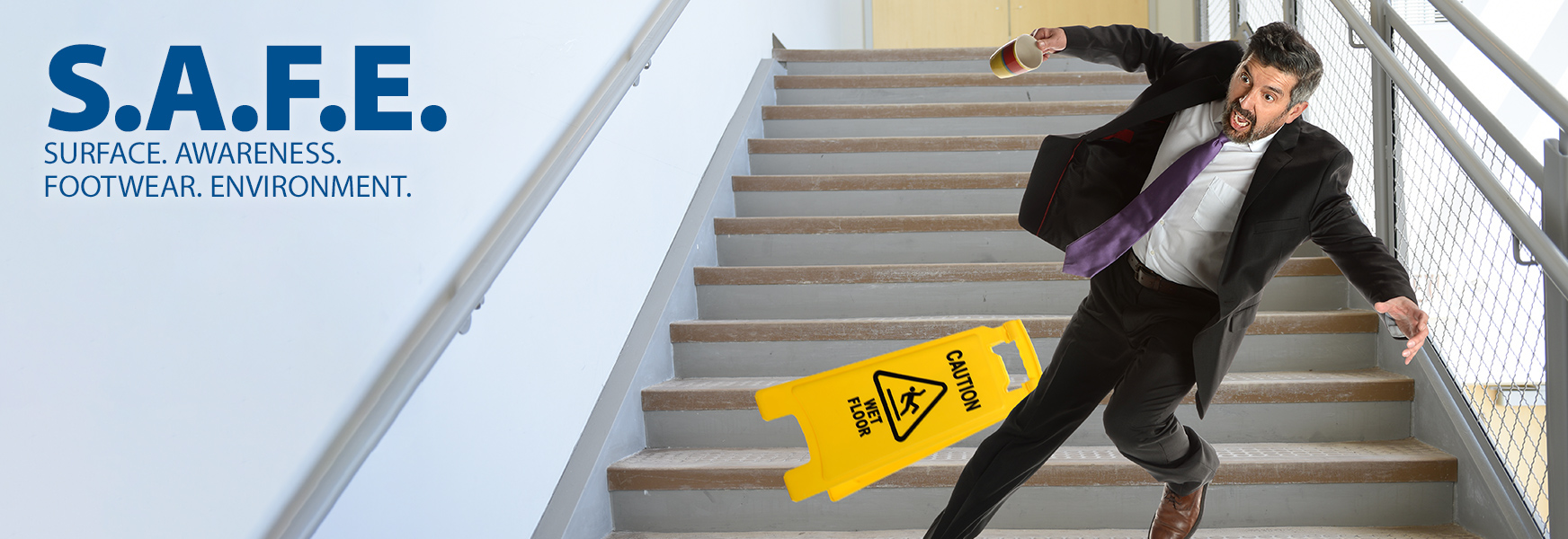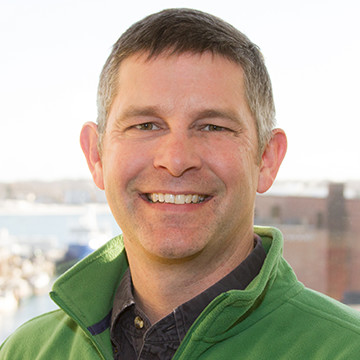Slip and Fall Prevention - The S.A.F.E. Way (Part 1)

S.A.F.E. – Surface, Awareness, Footwear, Environment
This is the first post in a series devoted to slip and fall injury prevention. A good portion of the country is faced with weather related hazards like ice and snow. These can lead to slips and falls unless a conscious effort is made to avoid them. Additionally, every work environment can present slip hazards, indoors or out. Prevent slip and fall incidents by employing the S.A.F.E. approach.
1. Surface
Knowing your surfaces and their characteristics can help prevent slips and falls. What is it made of, does it get wet or greasy, is it flat, is there more than one flooring type in the workplace, or are there worn or damaged areas?
- When the going gets slippery, go slow and walk like a duck, or penguin if you prefer.
2. Awareness
What we do while walking can affect our awareness of surface condition and we might miss changes that have occurred. Being distracted, busy work environments, poor lighting, or carrying material that blocks our view of the floor can increase the possibility of a slip and fall.
- The habits we develop at work can sometimes cause us to lose awareness. Do you often walk quickly? Do you use your Smartphone while walking? These activities can lead to the loss of awareness and a nasty slip and fall.
3. Footwear
Your footwear is the link between you and the surface you walk on. Not all footwear is compatible with every surface. Sometimes a shoe that is comfortable and great in the office is not very functional on the shop floor or vice versa. Inspect your footwear by evaluating your duties, the surface, the footwear kind needed, what you are currently wearing, and the footwear condition.
- Kind – is the kind of shoe compatible with the surface? Does it provide support, cushioning, and traction on the surfaces you will work on?
- Condition – will the footwear condition provide the protection that it had when it was new? Check the soles, laces, upper, toe, and heel.
4. Environment
Look around. What in your environment can cause a slip or trip?
- Inclement or changing weather conditions can increase the chance of a slip and fall.
- Special situations such as child care areas, parking lots, and work areas with vehicular traffic can place unexpected hazards in our way.
- Can you designate walkways that are always kept clear?
Improving safety by eliminating slip and fall injuries starts with making workplace changes. Where do you start? Use the MEMIC resources found in the MEMIC Safety Director to evaluate and prioritize the surfaces in your workplace to start making changes.
Look for more Safety Net posts about the S.A.F.E. way out of slips and falls soon and get out there, go for a walk, and get familiar with the space under your feet.

